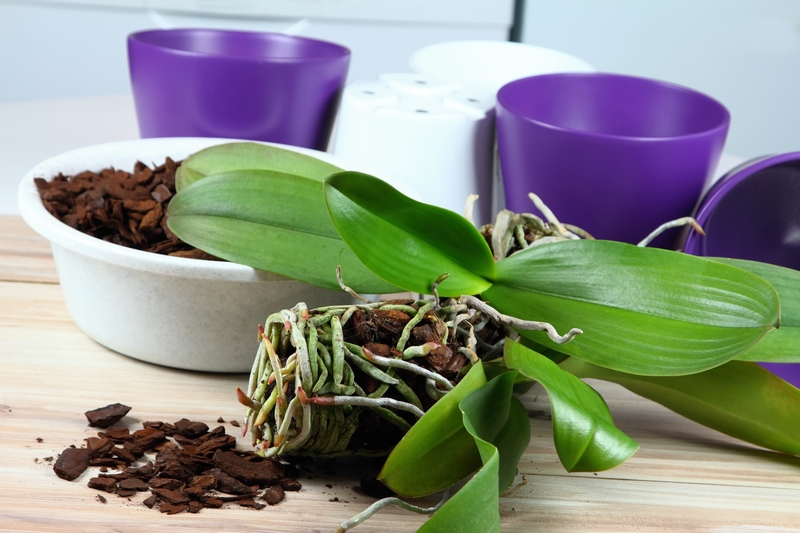Top 5 Harmful Plants for Your Garden
Posted on 17/05/2025
Top 5 Harmful Plants for Your Garden
Gardening is a beloved hobby for many, bringing people closer to nature and providing a satisfying sense of accomplishment. However, not all plants are garden-friendly. Some can threaten the well-being of other plants, pets, or even humans. Here's a detailed look into the top 5 harmful plants for your garden.
1. Japanese Knotweed (Fallopia japonica)
Japanese Knotweed is one of the most invasive plants encountered in gardens today. Originating from East Asia, it was initially admired for its bamboo-like stems and pretty white flowers. However, its attractiveness quickly fades when its invasive nature becomes apparent.
Growth & Spread: Japanese Knotweed can grow up to 10 feet tall and dominate large areas rapidly. It spreads through both seed and its extensive root system, known as rhizomes. These rhizomes can grow horizontally up to 20 feet.
Damage: The plant's rapid growth can out-compete native flora, reduce biodiversity, and damage structural foundations by growing through concrete and brick. Its aggressive nature makes it very difficult to remove, often requiring professional intervention.
Removal: Effective removal involves a combination of cutting back the stems, applying specific herbicides, and in severe cases, excavating the soil. Consistent monitoring is crucial for ensuring complete eradication.

2. Giant Hogweed (Heracleum mantegazzianum)
Giant Hogweed is recognized for its towering height, reaching up to 14 feet, and large umbrella-like clusters of white flowers. Though visually imposing, it's severely hazardous, especially to human health.
Growth & Spread: This plant can reproduce via seeds, with a single plant capable of producing up to 50,000 seeds, which can remain viable in the soil for years.
Damage: The sap of Giant Hogweed is phototoxic, meaning it reacts with sunlight, causing severe skin burns, blisters, and even blindness if it comes into contact with the eyes. Because of these severe reactions, any handling requires extreme caution.
Removal: Protect yourself by wearing protective clothing and eye protection when dealing with Giant Hogweed. Cut down the stems and apply a strong herbicide to the base of the plants. Due to the plant's aggressive nature, multiple treatments may be necessary to completely eradicate it.
3. Poison Ivy (Toxicodendron radicans)
"Leaves of three, let it be" is a common saying to remember when identifying this plant. Poison Ivy is notorious for causing itchy rashes and allergic reactions upon contact.
Growth & Spread: Poison Ivy can grow as a ground cover, a shrub, or as a climbing vine. It propagates through bird-dispersed seeds and by spreading its roots underground.
Damage: The plant contains urushiol, an oily compound that triggers allergic reactions in many people. Reactions can range from mild itching to severe and painful rashes and blisters.
Removal: Wear long gloves and protective clothing while removing Poison Ivy. You can use herbicides specifically formulated for Poison Ivy or manually remove it. Ensure you remove the entire root system to prevent regrowth and wash all clothes and tools thoroughly after handling the plant.
4. Kudzu (Pueraria montana var. lobata)
Originally introduced to control soil erosion, Kudzu has become one of the most invasive plants in the U.S. Its rapid growth can quickly smother other vegetation, earning it the nickname "the vine that ate the South".
Growth & Spread: Kudzu can grow up to a foot a day in favorable conditions and can cover trees, bushes, and buildings. It primarily spreads through creeping stems and rooting at leaf nodes.
Damage: This extensive vine shades out other plants, depriving them of sunlight, which leads to the death of native flora. Kudzu's weight can also damage structures and trees it climbs.
Removal: Completely eliminating Kudzu often requires repeated cutting and herbicide applications. Regular monitoring is essential to catch growth early and prevent reinfestation. In severe cases, soil removal may be necessary.

5. Oleander (Nerium oleander)
Oleander is an evergreen shrub admired for its beautiful, fragrant flowers in colors ranging from pink to white. Despite its aesthetic appeal, this plant is extremely toxic.
Growth & Spread: Oleander can grow up to 20 feet tall and is often used as a screen or hedge. It propagates through seeds and cuttings.
Damage: All parts of the Oleander plant contain toxic compounds like oleandrin and neriine. Ingesting even a small amount can cause severe symptoms, including nausea, vomiting, abdominal pain, irregular heart rhythm, and can be fatal to both humans and pets.
Removal: When removing Oleander, wear gloves and avoid burning the plant, as inhaling the smoke is hazardous. Pull up the plant, roots and all, and carefully dispose of it. If using herbicide, ensure it's safe for the surrounding plants and wildlife.
Conclusion
Gardening can be a rewarding experience, but it's essential to be aware of plants that might pose risks to your garden's health, local ecosystem, and personal safety. While some harmful plants are invasive and spread rapidly, others pose toxic threats. Always research new plants before introducing them to your garden to ensure they are safe and suitable for your environment. Through vigilant monitoring and prompt action, you can enjoy a beautiful and safe garden space.




